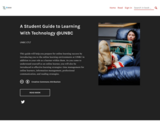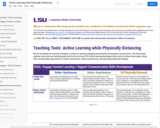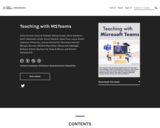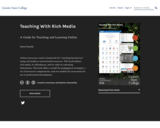
Word Count: 14663
(Note: This resource's metadata has been created automatically by reformatting and/or combining the information that the author initially provided as part of a bulk import process.)

Word Count: 14663
(Note: This resource's metadata has been created automatically by reformatting and/or combining the information that the author initially provided as part of a bulk import process.)

Word Count: 12520
(Note: This resource's metadata has been created automatically by reformatting and/or combining the information that the author initially provided as part of a bulk import process.)

Short Description:
Ryerson Open Moments is a book that describes the journeys of eight educators who came to discover open education through projects in which they developed open educational resources. Each of these stories recounts a different journey towards open and what open education comes to mean for each of our storytellers. These stories vary based on their goals, their experiences of teaching, and the types of projects they pursued.
Word Count: 11095
ISBN: 978-1-77417-016-8
(Note: This resource's metadata has been created automatically by reformatting and/or combining the information that the author initially provided as part of a bulk import process.)

Short Description:
Ryerson Open Moments is a book that describes the journeys of eight educators who came to discover open education through projects in which they developed open educational resources. Each of these stories recounts a different journey towards open and what open education comes to mean for each of our storytellers. These stories vary based on their goals, their experiences of teaching, and the types of projects they pursued.
Word Count: 11095
ISBN: 978-1-77417-016-8
(Note: This resource's metadata has been created automatically by reformatting and/or combining the information that the author initially provided as part of a bulk import process.)

A reference for writing and self-publishing an open textbook
Short Description:
The BCcampus Open Education Self-Publishing Guide is a reference for individuals or groups wanting to write and self-publish an open textbook. This guide provides details on the preparation, planning, writing, publication, and maintenance of an open textbook.
Long Description:
The BCcampus Open Education Self-Publishing Guide is a reference for individuals or groups wanting to write and self-publish an open textbook.This guide provides details on the preparation, planning, writing, publication, and maintenance of an open textbook. Copyright, open-copyright licences, and the differences between citation and attribution are discussed as well as the importance of copy editing and proofreading. Checklists and templates are also provided. This guide replaces the BCcampus Open Education Authoring Guide.
Word Count: 41561
(Note: This resource's metadata has been created automatically by reformatting and/or combining the information that the author initially provided as part of a bulk import process.)

Openly published book
Title: Self-directed multimodal learning in higher education
Editor: Jako Olivier
Publisher: AOSIS, Cape Town, South Africa
ISBN: 978-1-928523-42-0
DOI: https://doi.org/10.4102/aosis.2020.BK210
Date of publication: 2020
This book aims to provide an overview of theoretical and practical considerations in terms of self-directed multimodal learning within the university context. Multimodal learning is approached in terms of the levels of multimodality and specifically blended learning and the mixing of modes of delivery (contact and distance education). As such, this publication will provide a unique snapshot of multimodal practices within higher education through a self-directed learning epistemological lens. The book covers issues such as what self-directed multimodal learning entails, mapping of specific publications regarding blended learning, blended learning in mathematics, geography, natural science and computer literacy, comparative experiences in distance education as well as situated and culturally appropriate learning in multimodal contexts.
This book provides a unique focus on multimodality in terms of learning and delivery within the context of self-directed learning. Therefore, the publication would not only advance the scholarship of blended and open distance learning in South Africa, but also the contribute to enriching the discourse regarding self-direction. From this book readers will get an impression of the latest trends in literature in terms of multimodal self-directed learning in South Africa as well as unique empirical work being done in this regard.

The Claremont Colleges Open Education advocacy guide for student leaders
Short Description:
For students, the high cost of educational resources and textbooks can be a serious obstacle to the accessibility and affordability of a post-secondary education. For instructors, traditional educational resources may also present a barrier to innovation in teaching and curriculum design. Fortunately, open educational resources (OER) provide a viable solution to both these issues. OER can be accessed for free online or printed at a fraction of the cost of a traditional textbook, and can be edited to better fit the curricular or pedagogical goals of an instructor.
Long Description:
The high cost of educational resources and textbooks create a serious obstacle to the accessibility and affordability of a post-secondary education. Traditional educational resources also present barriers to innovation in pedagogy and curriculum design. Fortunately, open educational resources (OER) are a viable solution to both these problems, since they can be accessed for free online or printed at a fraction of the cost of a traditional textbook and can be edited to better fit the curricular or pedagogical goals of an instructor.
Word Count: 4424
(Note: This resource's metadata has been created automatically by reformatting and/or combining the information that the author initially provided as part of a bulk import process.)

Word Count: 3666
(Note: This resource's metadata has been created automatically by reformatting and/or combining the information that the author initially provided as part of a bulk import process.)

This guide will help you prepare for online learning success by introducing you to the online learning environments at UNBC in addition to your role as a learner within them. As you come to understand yourself as an online learner, you will also be introduced to effective learning strategies: time management for online learners, information management, professional communication, and reading strategies.

Short Description:
Compiled by Jennifer Snoek-Brown, Tacoma Community College Library. This directory of OER subject guides was created for Tacoma Community College faculty and staff, and reflects TCC credit, continuing education, and corrections course offerings. The purpose of these guides is to help faculty and staff more easily find and review OER in their areas so that they can make decisions about quality, accuracy, relevancy, and potential use.
Long Description:
This directory of OER subject guides was created for Tacoma Community College faculty and staff, and reflects TCC credit, continuing education, and corrections course offerings. The purpose of these guides is to help faculty and staff more easily find and review OER in their areas so that they can make decisions about quality, accuracy, relevancy, and potential use.
Word Count: 2923
(Note: This resource's metadata has been created automatically by reformatting and/or combining the information that the author initially provided as part of a bulk import process.)

We are all looking for practical strategies to make our teaching engaging and impactful during these unusual times. The chart below outlines some common teaching goals and the face-to-face (F2F) active learning techniques often used to achieve those goals, along with corresponding approaches for online synchronous, online asynchronous, and physically-distanced settings.

Guidelines for designing teaching and learning
Short Description:
On October 10, 2019, Teaching in a Digital Age - Second Edition was published. The book examines the underlying principles that guide effective teaching in an age when all of us, and in particular the students we are teaching, are using technology. A framework for making decisions about your teaching is provided, while understanding that every subject is different, and every instructor has something unique and special to bring to their teaching. The book enables teachers and instructors to help students develop the knowledge and skills they will need in a digital age: not so much the IT skills, but the thinking and attitudes to learning that will bring them success. Book release date (final version): 1 April 2015. For subsequent updates, see Updates and Revisions.[Scroll down for list of contents]
Long Description:
The book examines the underlying principles that guide effective teaching in an age when all of us, and in particular the students we are teaching, are using technology. A framework for making decisions about your teaching is provided, while understanding that every subject is different, and every instructor has something unique and special to bring to their teaching.
The book enables teachers and instructors to help students develop the knowledge and skills they will need in a digital age: not so much the IT skills, but the thinking and attitudes to learning that will bring them success.
Word Count: 179635
ISBN: 978-0-9952692-0-0
(Note: This resource's metadata has been created automatically by reformatting and/or combining the information that the author initially provided as part of a bulk import process.)

Guidelines for designing teaching and learning
Short Description:
The book examines the underlying principles that guide effective teaching in an age when all of us, and in particular the students we are teaching, are using technology. A framework for making decisions about your teaching is provided, while understanding that every subject is different, and every instructor has something unique and special to bring to their teaching.The book enables teachers and instructors to help students develop the knowledge and skills they will need in a digital age: not so much the IT skills, but the thinking and attitudes to learning that will bring them success. Book release date (final version): 1 April 2015. For subsequent updates, see Updates and Revisions.[Scroll down for list of contents]
Word Count: 177279
ISBN: 978-0-9952692-0-0
(Note: This resource's metadata has been created automatically by reformatting and/or combining the information that the author initially provided as part of a bulk import process.)

Long Description:
Teaching with MSTeams prepares you to use Microsoft Teams to facilitate your online classes. It provides suggestions to ensure you have a successful online learning experience while also providing detailed instructions to implement these tips. After reviewing the various sections, you will have a well-rounded understanding of what MS Teams has to offer.
Word Count: 10091
(Note: This resource's metadata has been created automatically by reformatting and/or combining the information that the author initially provided as part of a bulk import process.)

A Guide for Teaching and Learning Online
Short Description:
Online instructors need a framework for "teaching beyond text" using rich media as instructional resources. This book defines rich media, its affordances, and its value in conveying information. The book offers a model for pedagogical strategies, a set of instructor competencies, and two models for assessment for use in professional development.
Long Description:
Online instructors need a framework for “teaching beyond text” using rich media as instructional resources. These include multimedia, social media, and cloud-based Web tools. This book defines rich media, its affordances, its value in conveying information, a model for pedagogical strategies, a set of instructor competencies, and two models for assessment for use in professional development.
Word Count: 15257
(Note: This resource's metadata has been created automatically by reformatting and/or combining the information that the author initially provided as part of a bulk import process.)

Short Description:
This freely available eBook is designed to provide an overview of the entire process of teaching with technology, from planning to implementation. Written for the Australian higher education context, this resource will help you plan, design, develop, and teach technology-enhanced subjects and courses. Up to date information is included on strategies and recommendations that illustrate good practice pedagogical design; tips on planning, developing, and writing online subject content; as well as planning and facilitating online interaction.
Word Count: 11091
ISBN: 978-0-6452143-7-6
(Note: This resource's metadata has been created automatically by reformatting and/or combining the information that the author initially provided as part of a bulk import process.)

Short Description:
This starter kit has been created to provide instructors with an introduction to textbook affordability and to the use and creation of open educational resources (OER). The text is broken into five sections: Getting Started, Copyright, Finding OER, Teaching with OER, and Creating OER. Although some chapters contain more advanced content, the starter kit is primarily intended for users who are entirely new to Open Education. [Version 1.1. Revised September 5th, 2019.]
Long Description:
This starter kit has been created to provide instructors with an introduction to textbook affordability and to the use and creation of open educational resources (OER). The text is broken into five sections: Getting Started, Copyright, Finding OER, Teaching with OER, and Creating OER. Each chapter is accompanied with learning objectives and most chapters feature interactive elements and opportunities for readers to engage with the text. Although some chapters contain more advanced content, the starter kit is primarily intended for users who are entirely new to Open Education.
Word Count: 24786
(Note: This resource's metadata has been created automatically by reformatting and/or combining the information that the author initially provided as part of a bulk import process.)

Selecting appropriate Technologies
Short Description:
The use of open education is growing and has become a global movement. Across much of North America, most post-secondary institutions are in the process of integrating the use of open education resources into their teaching and learning activities. The number of OER repositories from which instructors can draw resources continues to grow each year. The number of resources continues to grow along with the number of different tools used to develop these resources. There are a number of commercial and open source digital technologies available for the creation of open resources. This resource is intended to provide the OER community with a summary of some currently available tools for creating open content. OER creators need to know the range of tools that can be used in the creation process. This guide is designed to provide a starting point for instructors and faculty at post-secondary institutions. Prospective creators of OER can use the guide to pick the most appropriate tool for their specific context and level of technical expertise.
Long Description:
The use of open education is growing and has become a global movement. Across much of North America, most post-secondary institutions are in the process of integrating the use of open education resources into teaching and learning activities. The following are the chapters covered in the guide: Chapter 1 starts with very basic information on the definition and description of what constitutes OER. Chapter 2 introduces the United Nations Sustainable Development Goals by providing a brief listing of each goal. Chapter 3 focuses on commercial word processing tool options. Chapter 4 describes a number of open-source word processing and additional tools. Chapter 5 introduces the basic open-source TeX-based systems that arose out of the open-source software movement. Chapter 6 delves further into TeX-based open-source tools by highlighting some packages useful for content creation. Chapter 7 describes other TeX-based tools helpful for creating open content. Chapter 8 introduces the emerging OER tools Pressbooks, EdTech Books and LibreTexts.
Word Count: 32461
(Note: This resource's metadata has been created automatically by reformatting and/or combining the information that the author initially provided as part of a bulk import process.)

Selecting appropriate Technologies
Short Description:
The use of open education is growing and has become a global movement. Across much of North America, most post-secondary institutions are in the process of integrating the use of open education resources into their teaching and learning activities. The number of OER repositories from which instructors can draw resources continues to grow each year. The number of resources continues to grow along with the number of different tools used to develop these resources. There are a number of commercial and open source digital technologies available for the creation of open resources. This resource is intended to provide the OER community with a summary of some currently available tools for creating open content. OER creators need to know the range of tools that can be used in the creation process. This guide is designed to provide a starting point for instructors and faculty at post-secondary institutions. Prospective creators of OER can use the guide to pick the most appropriate tool for their specific context and level of technical expertise.
Long Description:
The use of open education is growing and has become a global movement. Across much of North America, most post-secondary institutions are in the process of integrating the use of open education resources into teaching and learning activities. The following are the chapters covered in the guide: Chapter 1 starts with very basic information on the definition and description of what constitutes OER. Chapter 2 introduces the United Nations Sustainable Development Goals by providing a brief listing of each goal. Chapter 3 focuses on commercial word processing tool options. Chapter 4 describes a number of open-source word processing and additional tools. Chapter 5 introduces the basic open-source TeX-based systems that arose out of the open-source software movement. Chapter 6 delves further into TeX-based open-source tools by highlighting some packages useful for content creation. Chapter 7 describes other TeX-based tools helpful for creating open content. Chapter 8 introduces the emerging OER tools Pressbooks, EdTech Books and LibreTexts.
Word Count: 32474
ISBN: 978-0-7731-0777-9
(Note: This resource's metadata has been created automatically by reformatting and/or combining the information that the author initially provided as part of a bulk import process.)

Short Description:
This starter kit has been created to provide instructors with an introduction to the use and creation of open educational resources (OER). The text is broken into five sections: Getting Started, Copyright, Finding OER, Teaching with OER, and Creating OER. Although some chapters contain more advanced content, the starter kit is primarily intended for users who are entirely new to Open Education. [Version 1.1. Revised September 5th, 2019.]
Long Description:
This starter kit has been created to provide instructors with an introduction to the use and creation of open educational resources (OER). The text is broken into five sections: Getting Started, Copyright, Finding OER, Teaching with OER, and Creating OER. Each chapter is accompanied with learning objectives and most chapters feature interactive elements and opportunities for readers to engage with the text. Although some chapters contain more advanced content, the starter kit is primarily intended for users who are entirely new to Open Education.
Word Count: 24761
(Note: This resource's metadata has been created automatically by reformatting and/or combining the information that the author initially provided as part of a bulk import process.)